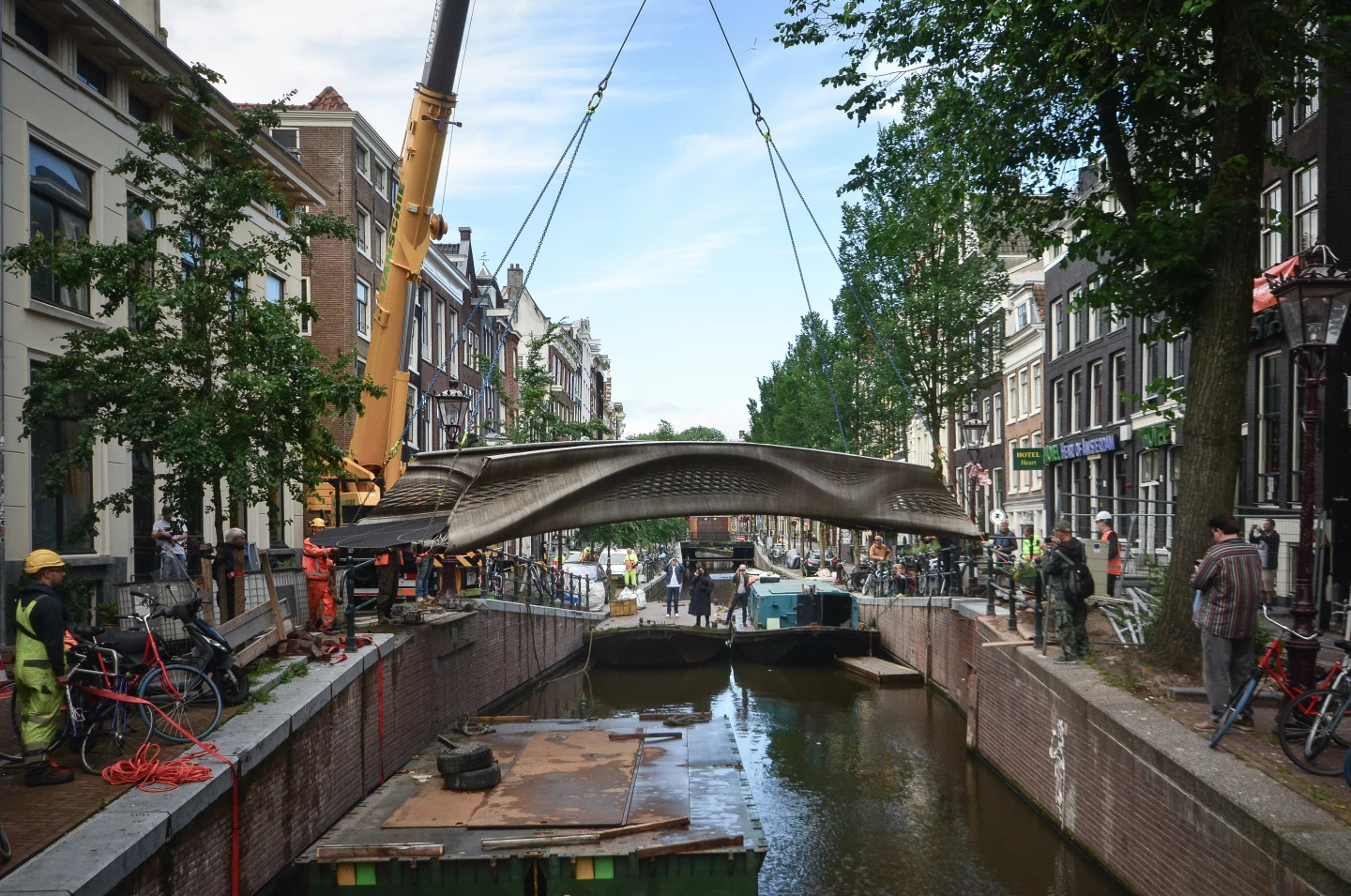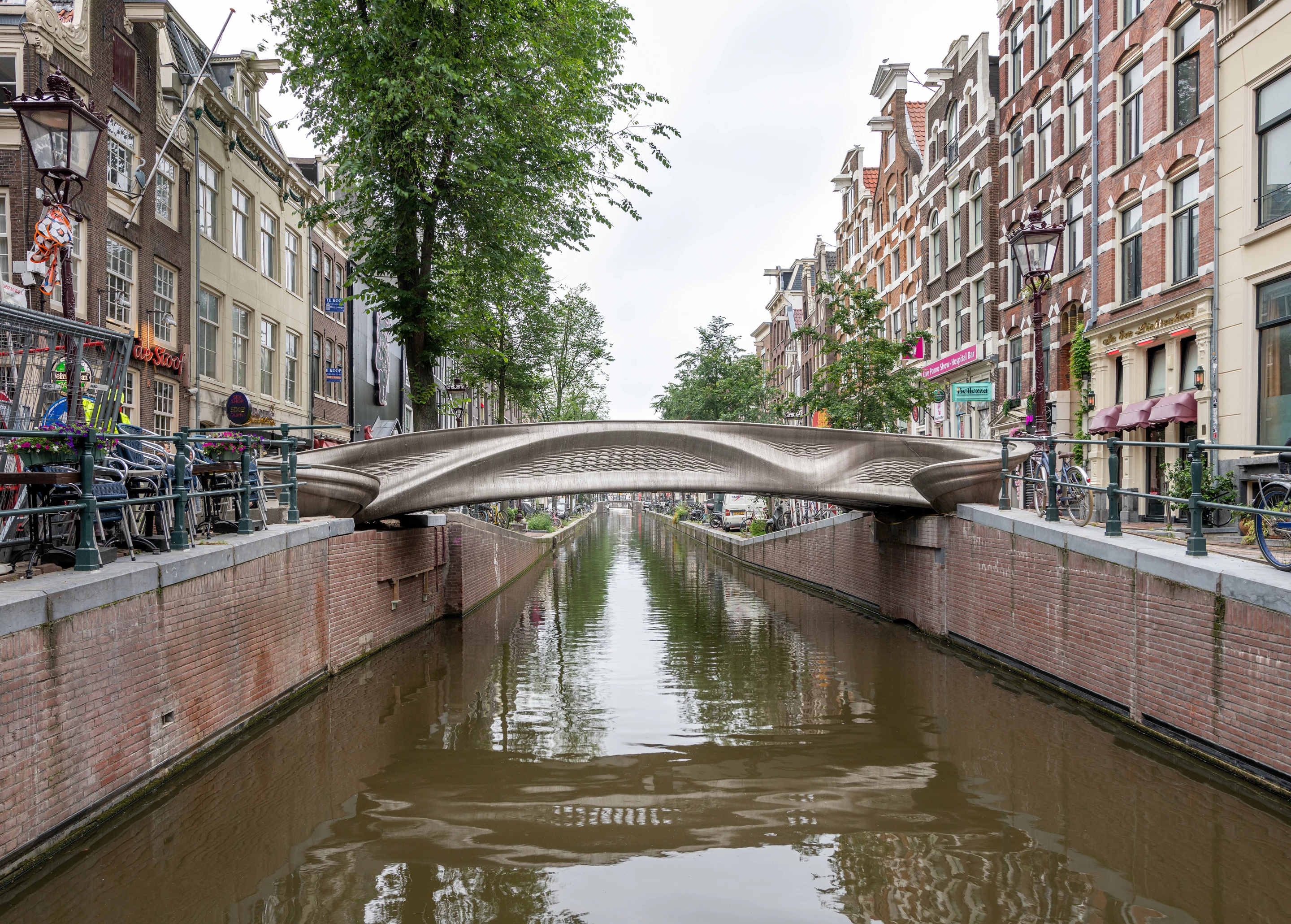MX3D has finally realized its ambitious plan to install what's described as the world's first 3D-printed steel bridge over a canal in Amsterdam. The Queen of the Netherlands has officially opened the bridge to the public and, as well as an eye-catching design, it features hidden sensors that are collecting data on its structural integrity, crowd behavior, and more.
The project was designed by Joris Laarman Lab, with Arup handling engineering duties, and also involved ABB, Air Liquide, ArcelorMittal, Autodesk, AMS Institute and Lenovo. The original plan was to create the bridge in place, but this turned out to be impossible due to safety issues and other concerns, so it was made in a factory.
The actual printing process only took six months and was completed in 2018, but because of unforeseen delays, including a wait while the canal walls were refurbished, the bridge was only recently transported to the site by a boat and then raised into position using a crane. It has a permit to remain in place for two years.

The bridge measures 12.2 m (40 ft) in length and has a width of 6.3 m (20 ft). Whereas 3D-printed concrete projects extrude a cement-like mixture out of a nozzle in layers, metal obviously handles totally differently. Therefore, creating the complex design of the bridge involved four robots welding layers of hot metal together using standard welding wire and gas. A total of 6,000 kg (13,227 lb) of stainless steel was used in all.
"Basically our M1 metal AM system is a standard welding robot and a custom set of sensors," MX3D CEO Gijs van der Velden tells New Atlas. "We developed the CAM and data management software to organize the welding process in such a way that it becomes suitable for layer by layer deposition as opposed to connecting two pieces of metal together.
"We use standard welding wires and gas. All that allows us to use a lot of the existing welding science, hence the material properties of the end parts created with our technology are excellent. As this is built on technologies already in use in most industrial companies the adoption process is easy, skills to operate are in house and operational regulations are identical to those that apply to welding."

The series of sensors installed on the bridge are being used to collect structural measurements concerning strain, rotation, load, displacement, and vibration, while also reading data on environmental factors like air quality and temperature as locals and visitors make use of the crossing in Amsterdam's bustling Red Light District.
All this data are being fed into an exact computer model of the bridge (called a digital twin) to help engineers monitor its structural status in real time. The data will also be used to "teach" the bridge to count how many people are crossing it and how quickly, and more.
It's not so long ago that robotically fabricating a metal bridge with such complex shapes would have seemed like science fiction, but such is the extraordinary rate of progress in the 3D printing architecture scene, with other notable strides including affordable housing and luxury homes.
Source: MX3D








